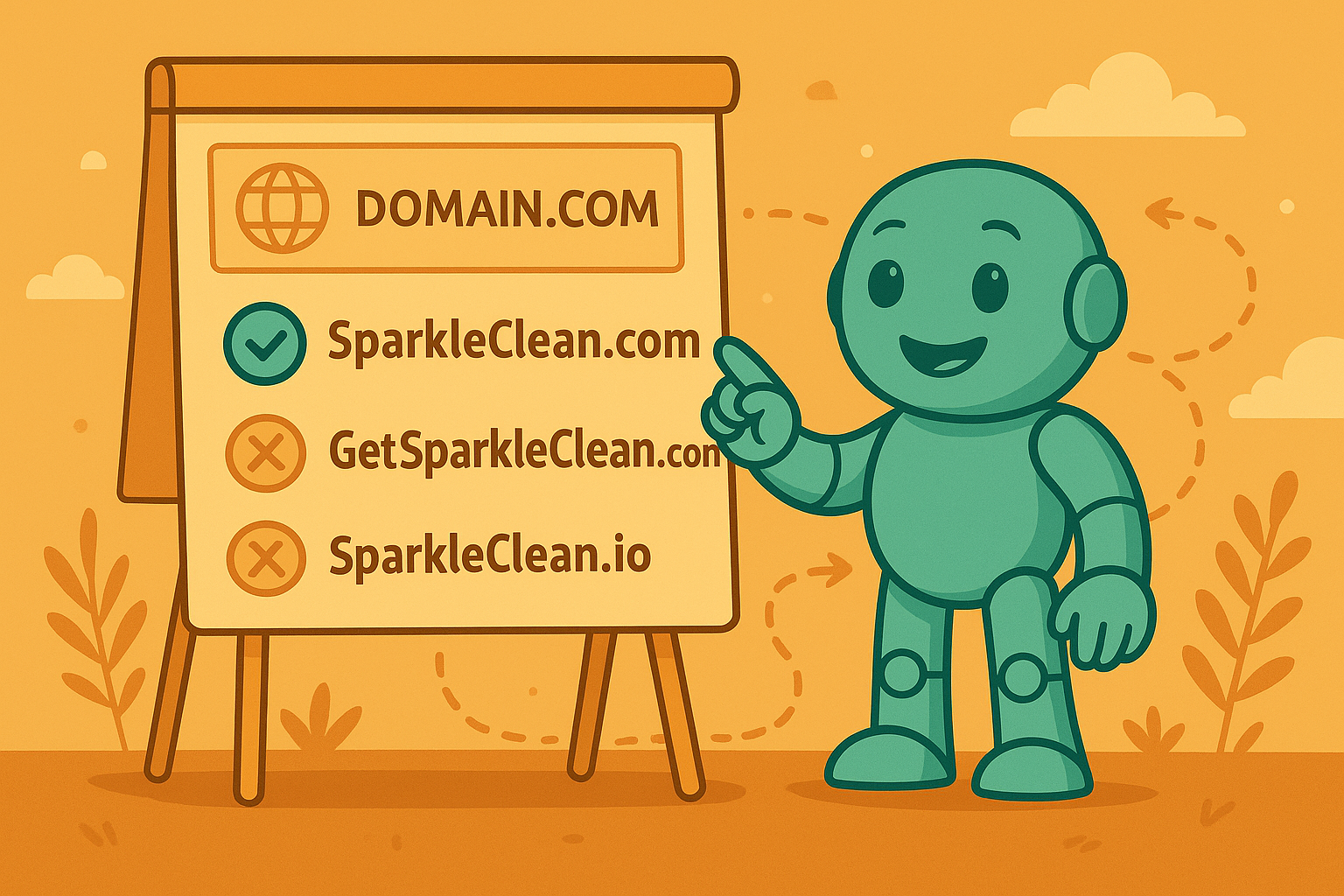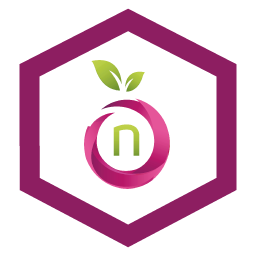How to Name a Blog: Expert Tips & Ideas
Deciding on a blog name isn't just a single task; it’s a journey with four key milestones: brainstorming creative ideas, stress-testing them for SEO and audience appeal, checking domain and social media availability, and steering clear of common legal and branding traps. Nail this process, and you’ll have a name that’s memorable, findable, and the perfect launchpad for your brand.
Your Blog Name Is Your Brand's First Handshake

Let's be clear: your blog's name is so much more than a simple label. It’s the very cornerstone of your brand identity and your first real opportunity to connect with someone. In a digital world overflowing with content, a forgettable name is a death sentence. A great one, however, does the heavy lifting for you.
Think of it as your silent ambassador. It works 24/7, hinting at your niche, conveying your tone, and communicating your value before a visitor ever reads a single word.
The weight of this decision can't be overstated. It's like pouring the foundation for a house—if it's weak or cracked, everything you build on top of it will be unstable. A poorly chosen name can cause brand confusion, hamstring your growth, or even land you in legal trouble later on.
The Anatomy of the Naming Process
Before you start scribbling ideas on a napkin, it helps to understand the full picture. Finding the perfect name is rarely a single flash of inspiration. It’s a structured process that I’ve seen work time and time again.
I always break it down into these distinct stages:
- The Ideation Phase: This is where you let your creativity run wild. You'll generate a long, unfiltered list of names inspired by your topic, your target reader, and the personality you want your brand to have.
- The Evaluation Gauntlet: Next, you'll put that list to the test. You'll filter your ideas through practical criteria—is it easy to remember? To spell? Does it actually make sense for your niche?
- The Verification Check: This is the final, crucial reality check. Here, you'll meticulously check for domain availability, open social media handles, and any potential trademark conflicts.
Your blog name is your digital handshake. It should be firm, confident, and immediately tell people who you are and what you stand for. Get it right, and you've already won half the battle for a reader's attention.
The sheer volume of competition makes this step non-negotiable. With over 600 million blogs online as of 2025, a distinctive name is your sharpest tool for carving out your own space. A name that instantly clicks with your topic helps both readers and search engines understand what you’re about, which is a massive head start. You can dive deeper into how a strong name fuels success by exploring these blogging statistics and facts on Wix.com.
A powerful blog name isn't just "catchy"; it's a strategic asset. To help you frame your thinking, I've broken down the essential characteristics into a simple table.
Pillars of a Powerful Blog Name
This table summarizes the core qualities every successful blog name should embody. Use it as a checklist when you start evaluating your own ideas.
| Characteristic | Why It Matters | Quick Example |
|---|---|---|
| Memorable & Simple | If people can't remember it, they can't return to it or recommend it. Easy recall is key. | NerdFitness |
| Relevant to Niche | The name should give a clear hint about your blog's topic, setting visitor expectations. | The Minimalists |
| Unique & Distinctive | It needs to stand out from the competition and avoid confusion with other established brands. | Wait But Why |
| Easy to Spell & Say | Avoid complex spellings or words that are hard to pronounce. Word-of-mouth is still powerful. | Copyblogger |
| Future-Proof | Don't pick a name so narrow it traps you. It should be broad enough to allow for future growth. | A Beautiful Mess |
Think of these pillars as your guideposts. As you move through the brainstorming and vetting process, keep coming back to them. A name that ticks all these boxes is one that’s built to last.
Brainstorming Names That Are Creative and Brandable

Let's be honest, staring at a blank page trying to come up with the perfect blog name can feel paralyzing. But this initial step isn't about waiting for a lightning bolt of inspiration. It's about a repeatable process that can fill that page with solid contenders.
My go-to starting point is always mind mapping. It's a simple but incredibly effective way to get the ideas flowing. Just put your main topic in the center—let's say "vegan baking"—and start branching out. Think of every related concept: "plant-based," "healthy desserts," "dairy-free," "ethical eating." This visual method always helps me uncover surprising connections and words I wouldn't have thought of otherwise.
Once you have a good mind map, pull out a thesaurus. Look up the keywords you've identified to find more compelling alternatives. For instance, "healthy" could become "vibrant," "whole," or "nourishing." You can then mix and match these new words with your core topic to see what sticks.
Exploring Different Naming Styles
Blog names tend to fall into a few different buckets, and it helps to think about which style fits the brand you're trying to create. Each has its own pros and cons.
-
The Personal Brand Name: Using your own name, like Nomadic Matt, is a fantastic way to build a brand around you. It’s direct, it feels personal, and it positions you as the expert right from the start.
-
The Descriptive Keyword Name: This approach tells people exactly what your blog is about. Minimalist Baker is a classic example—it clearly communicates its niche (simple recipes) and its topic (baking). It’s straightforward and can give you a nice little SEO boost.
-
The Abstract or Invented Name: Names like TechCrunch are powerful because they are completely unique and highly brandable. Creating a "portmanteau" by blending two words is a great way to coin a term that's all your own.
Your goal right now isn't to find "the one." It's to build a long list of at least 20-30 viable candidates. Quantity over quality is the name of the game at this stage. You need plenty of raw material to work with later.
This phase is all about generating possibilities without judgment. If you feel like you're hitting a creative wall, don't be afraid to lean on some tools. Many founders and creators use specialized platforms to kickstart their process. You can explore some of these business name generators on NameRobot.com to get a feel for how they can supplement your own brainstorming.
Ultimately, the best method is the one that works for you. Try out different techniques—play with alliteration (Starbucks Stories), adapt a common phrase, or even look up key terms in another language. The aim is to create a diverse list of names that you can then put through the wringer, which we'll cover next.
How to Vet Your Name for SEO and Audience Appeal

Coming up with a clever name is a great start, but it's only half the battle. If your audience can't find you, even the most creative name will fall flat. This is where you need to switch gears from a creative brainstormer to a sharp-eyed marketer. It’s time to put your favorite names through a gauntlet, looking at them through the dual lenses of modern SEO and how real people will react to them.
This isn’t about just cramming keywords into your name. It's about picking a name that signals your purpose and starts building trust from the very first glance. Think of your blog name as the first clue you give to both search engines and potential readers about the value you're about to deliver.
A name that aligns with what people are actually searching for has a huge head start. For instance, a blog called DIY Home Fixes instantly tells someone they'll find practical, hands-on advice. That’s a perfect match for a search like "how to fix a leaky faucet."
Evaluating Search Intent and Clarity
The old days of obsessing over exact-match keywords in a domain are long gone. Today, Google and other search engines are far more sophisticated, prioritizing user intent and E-E-A-T (Experience, Expertise, Authoritativeness, and Trustworthiness). Your name should reflect this reality. A name that clearly communicates its purpose is simply more likely to get clicked on in search results.
Think about the different reasons people search for things:
- Informational: The user needs answers or wants to learn. A name like Science Simplified nails this.
- Transactional: The user is ready to buy. Names like Best Tech Deals or Budget Skincare Finds signal this intent loud and clear.
- Navigational: The user wants a specific site, like searching "Amazon." This isn't a primary concern for new blogs.
- Commercial Investigation: The user is comparing options. A blog named Bike Gear Reviews perfectly serves this purpose.
The latest blogging trends all point in this direction. Aligning your blog name with a clear purpose is more critical than ever for SEO. As you can see in these emerging blogging trends on NewswireJet.com, blogs with names that suggest authority and reliability tend to build a more loyal audience, faster.
Conducting a Practical Readability Check
Beyond the technical side of SEO, you have to consider the human element. How does the name actually feel to your target audience? A simple but incredibly effective test is to just say your top contenders out loud.
Ask yourself these questions:
- Is it easy to pronounce?
- Is it simple to spell after hearing it only once?
- Does it sound clunky, awkward, or confusing?
A name that passes the "radio test" is a real winner. This means someone could easily find your site after hearing it mentioned on a podcast or in a conversation. It's memorable, intuitive, and spreads effortlessly by word-of-mouth.
For example, telling a friend to "check out Minimalist Baker" is easy. It's clear and memorable. On the other hand, a name like "K8's Kreative Kooking" is a spelling disaster waiting to happen, sending would-be visitors to a dead end or, even worse, a competitor.
Before you get too attached, run your top 2-3 names by a few trusted friends or colleagues, especially those who fit your target reader profile. Their gut reaction is gold. If they look confused or immediately ask you to spell it, that’s a massive red flag. This simple feedback loop can save you from a major branding headache down the road.
Checking Availability to Secure Your Digital Identity
You've done the creative work—brainstorming, getting feedback, and narrowing it down to a few names you genuinely love. But before you print the t-shirts, you need to tackle the most crucial reality check: is the name actually available? This is where the rubber meets the road, and it’s a non-negotiable step to avoid the pain of a rebrand down the line.
Securing your digital identity isn't just about snagging a URL. It’s about building a consistent, recognizable presence everywhere your audience might look for you. Think of it as claiming your digital real estate.
The Domain Name Reality Check
First things first: the domain name. It’s the cornerstone of your online brand. While there are countless domain extensions out there, let's be honest—the .com is still king. It's what people type by default, and it carries an inherent sense of trust and authority. If your top choice is available as a .com, that’s a huge win.
But what if it's taken? Don't throw in the towel just yet. You have a couple of solid options:
- Tweak it with a modifier. Try adding a small, logical word. If "SparkleClean.com" is gone, maybe "GetSparkleClean.com" or "SparkleCleanCo.com" is free. Keep it simple and intuitive.
- Explore other TLDs. Extensions like .co and .io are popular, especially for tech brands and startups. Just know your audience; some people might still instinctively type .com, so you risk losing traffic.
The aim is to find a domain that’s as close to your brand name as possible and dead simple to remember. My advice? Avoid hyphens and numbers at all costs. They are a pain to communicate verbally and often signal that you settled for a second-best option.
This is a final check, but as this visual flow shows, it's something you should be thinking about throughout the process.

As you can see, vetting for things like readability and real-world appeal should happen before you even get to this final search.
Beyond the Domain: Social Media and Trademarks
Got a great domain? Fantastic. But your work isn't done. Now, you need to see if the corresponding social media handles are available. You want @YourBlogName on Instagram, X (formerly Twitter), Pinterest, and any other platform your audience frequents. Consistency is key.
Don’t underestimate the power of brand consistency. A user who finds you on Pinterest should be able to find you on Instagram using the exact same name. Any friction in that process is a lost follower waiting to happen.
Finally, and this is a big one, you need to do a basic trademark search. A quick look at the U.S. Patent and Trademark Office (USPTO) database can tell you if another business is already legally operating under that name. This isn't formal legal advice, but it's an essential due diligence step to prevent major headaches later. Larger companies often use specialized tools for this; you can see how naming agencies find names on NameRobot.com to understand the professional process.
With the blogging industry projected to grow by an incredible $417.85 billion between 2021 and 2025, the digital space is more crowded than ever. This explosive growth makes securing a unique, legally sound, and widely available name more valuable than it has ever been.
Common Naming Mistakes You Need to Avoid
One of the smartest things you can do when naming your blog is to learn from the mistakes others have made. A great name acts like a tailwind, pushing you forward, while a poorly chosen one can be an anchor that drags you down for years. Let’s walk through the most common pitfalls I’ve seen so you can avoid them from the get-go.
The Spelling and Pronunciation Trap
I can't tell you how many times I've seen entrepreneurs pick a name that's a nightmare to say or spell. You’ve got a great idea, you tell someone your blog name, and they immediately have to ask, "How do you spell that?" You've just lost your word-of-mouth advantage.
Think about a name like Kathryn's Kwezine. Is that "Cuisine"? Or "Kwisine"? It’s clever, but it creates instant friction for your audience. That's a battle you don't need to fight.
My two cents: Your name has to be intuitive. If someone hears it on a podcast, they should be able to punch it into a search bar without thinking twice. Simplicity is your best friend here.
Another classic blunder is shoehorning hyphens or numbers into a domain. Sure, best-taco-recipes-4u.com gets the point across, but it feels unprofessional and is a pain to share verbally. People will forget the hyphens, land on the wrong site, or just give up.
Painting Yourself into a Corner
Picking a name that’s too specific is a trap I’ve seen many bloggers fall into. It feels right at the moment, but it can seriously stunt your growth down the road.
Imagine you launch a blog called MyKetoJourney2025. What happens when 2026 rolls around? Or what if your interests expand into broader wellness topics beyond just keto? The name immediately feels dated and restrictive.
Always think about where you want to be in five years. A name like Holistic Fuel gives you the flexibility to evolve, while a name tied to a single trend or year boxes you in.
These issues often bleed into one another, creating a domino effect of branding problems. The principles for naming a blog are almost identical to those for a business, which you can explore further by reading about the three typical mistakes when naming a new company on NameRobot.com.
Skipping Your Homework
Finally, please don't skip a basic trademark search. It’s a rookie mistake with serious consequences. The last thing you want is to build a brand, only to receive a cease-and-desist letter demanding you change your name. That means starting all over again. A quick search at the beginning is a small price to pay for long-term peace of mind.
Common Questions When Naming Your Blog
Even with a solid plan, a few lingering questions can pop up right before you commit. It’s completely normal. Let’s walk through some of the most common sticking points I see people grapple with, so you can make your final choice with confidence.
Should I Use My Own Name for My Blog?
This is a classic branding crossroads. Using your personal name is a fantastic strategy if you’re building a personal brand—think consultants, authors, artists, or coaches. It instantly connects you to your work and builds authority around you.
The trade-off, however, is long-term flexibility. A blog tied directly to your name can be tricky to sell down the road. It also feels a bit out of place if your vision is to expand into a multi-author publication or a broader media brand.
What if My Perfect .COM Domain Is Taken?
Don't panic—this happens all the time. The first thing to do is check if the domain is simply parked and up for sale. Sometimes you can snag it for a reasonable price, but often the asking price is astronomical.
If it’s not a viable option, it's time to get a little creative. You can add a simple, relevant word to your original idea. Think "HQ," "Collective," "Lab," or even your city. For instance, if "CityGardener.com" is gone, "CityGardenerNYC.com" is a great alternative. You can also look at other top-level domains like .co or .io, but always remember that .com is still the gold standard for user trust.
Is a Quirky or Trendy Name a Good Idea?
A unique, quirky name can be incredibly memorable and help you stand out. But it has to feel authentic to your niche and your voice. A clever name for a finance blog might not land as well as one for a creative DIY blog.
The biggest risk here is that trends have a notoriously short shelf life.
Before you commit to a trendy name, ask yourself a simple question: Will this name still make sense and feel relevant in five years? Always prioritize timeless appeal over a clever name that might not age well.
Feeling ready to find the perfect name? The tools at NameRobot can accelerate your journey from brainstorming to a market-ready brand. Discover your perfect blog name at https://namerobot.com.















